Datasets for: NERP TE Project 5.2 - Combined water quality-climate effects on coral and other reef organisms (AIMS)

This dataset shows the measured response of early life history stages to different levels of nutrient enrichment and temperatures in experiments conducted in 2014-2015.
The data is presented as one Excel spreadsheet file. Each tab contains data from experiments (Exp. 1a,b; Exp 1c,d; Exp. 2; Exp 3) on different life stages exposed to the same conditions. Measured logged water quality (Nutrients) and temperature (Temperature) data taken during the experiment are also presented in different tabs.
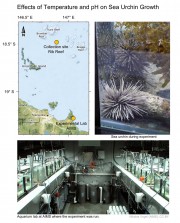
This experiment grew adult Echinometra sp. A sea urchins under four temperature and pH treatments 28 / 7.9, 28 / 8.1, 31 / 7.9, 31 / 8.1 (degrees C, pH) to investigate the interactive effects of warming and acidification on their physiology. These treatments were chosen to match those that may be experienced in the near-future (2100) due to climate change. Each treatment was replicated across 3 aquaria, each with 6 individuals for a total of 72 sea urchins.
Method:
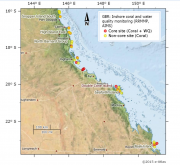
This dataset contains data on carbon chemistry on inshore reefs of the Great Barrier Reef (GBR). Main parameters measured were temperature, total alkalinity and dissolved inorganic carbon. The data was collected six times over two years (September 2011 - June 2012) covering a comprehensive latitudinal range.
The aim of this study was to investigate carbon chemistry on inshore reefs, and compare it to offshore reefs and historical data.
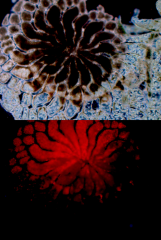
This dataset measures 5 effects of temperature and pH stressors (individual and combined) on tropical Foraminifera. The effects measured are: respiration, survivorship, growth, chl-a content and photochemistry. The study was conducted in 2011 and the data is provided as 5 single sheet spreadsheets.

This dataset consists of one data file from a 16 day aquarium experiment manipulating pH and light level and measuring growth, photosynthesis, calcification and pigment content of Acropora millepora.
The aim of this study was to test the hypothesis that a combined effect of decreased pH and decreased light on physiological responses of the coral is larger than that of each stressor individually.
Method:
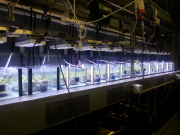
This dataset consists of one data file (spreadsheet) from a 2 week aquarium experiment manipulating pH (pCO2) changes and measuring photosynthetic and growth responses of three tropical seagrass species (Cymodocea serrulata, Halodule uninervis and Thalassia hemprichii).
The aim of this study was to test the hypothesis that increased pCO2 would increase photosynthetic and growth rates to various extents between seagrass species.
Method:
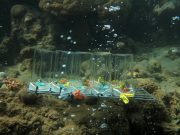
This dataset consists of one csv data file from field derived experiments at tropical carbon dioxide seeps in Papua New Guinea, measuring the response parameters: calcification, photosynthesis, carbon and nitrogen contents and carbon isotopic signatures on Halimeda opuntia grown under ocean acidification conditions.
The objective of this project is to assess how management of local stressors such as land runoff can help improve the resilience of coral reefs to global stressors (climate change) which are more difficult to manage. Complementary laboratory and field experiments will investigate the combined impacts of declining water quality (increased nutrients and sediments, and reduced light and salinity), increased sea temperature and ocean acidification on key reef species groups such as corals, foraminifera, crown-of-thorns starfish and rock-boring sea urchins.



